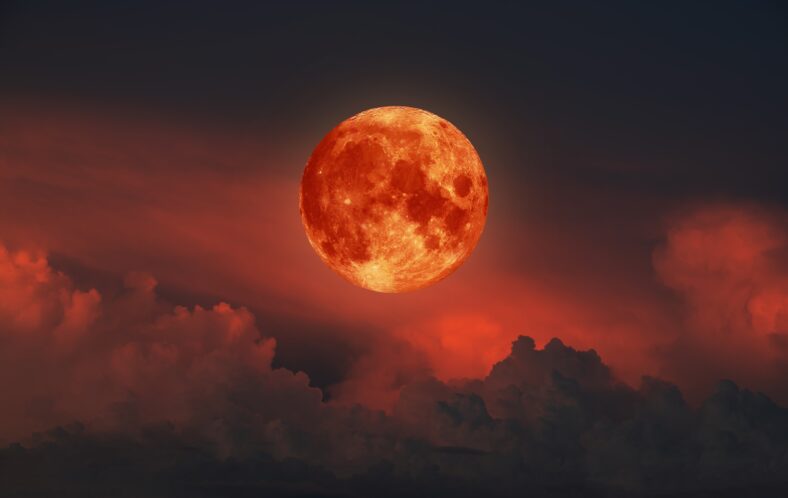How To Watch The Blood Moon Total Lunar Eclipse That’s Happening This Week

On March 13 and into the early hours of March 14, a total lunar eclipse will occur overnight, creating a rare glowing red “blood moon” that can be seen across North America, South America, and some parts of Europe and Africa.
The last total lunar eclipse took place nearly three years ago on Tuesday, November 8, 2022. This next one will be the only visible lunar eclipse in the United States until 2026.
A lunar eclipse happens when the Earth passes between the sun and the moon. In a total lunar eclipse, the entire moon is covered by the umbra, the darkest part of Earth’s shadow, blocking it from the sun completely.
As the Earth moves in front of the sun and blocks its light, the moon will appear a dark reddish-orange, hence the nickname “blood moon.”
“It’s as if all the world’s sunrises and sunsets are projected onto the moon,” according to NASA.
The spectacle will be visible throughout the U.S. on the night of March 13 to March 14. It is predicted that the moon will go through all of the eclipse phases in six hours and three minutes.
If you live in the U.S., you can see the eclipse start at about 11:57 p.m. Eastern Time (EDT). That is when the penumbral phase will occur, which is the moment where the moon passes through the penumbra, the outer part of the Earth’s shadow.
Totality will happen at 2:26 a.m. EDT. This is when the entire moon will be under the cover of the umbra, and the reddish hues of the blood moon will be on display.
All U.S. states will be able to view the total lunar eclipse. Hawaii and parts of Alaska will miss out on seeing the penumbral phase, but they will still get a great view of the blood moon.

Sign up for Chip Chick’s newsletter and get stories like this delivered to your inbox.
Here are the prime viewing times for different U.S. regions:
- Eastern Time: 2:26 to 3:32 a.m. EDT on Friday
- Central Time: 1:26 to 2:32 a.m. CDT on Friday
- Mountain Time: 12:26 to 1:32 a.m. MDT on Friday
- Pacific Time: 11:26 p.m. on Thursday into 12:32 a.m. PDT on Friday
- Alaska Time: 10:26 to 11:32 p.m. AKDT on Thursday
- Hawaii Time: 8:26 to 9:32 p.m. HST on Thursday
Up to 39 percent of the world will be able to see at least some of the penumbral phase, while 10.5 percent can observe the event from start to finish. It is safe to look at the lunar eclipse without protective eye gear.
Binoculars or a telescope will help you see it more clearly. For the best viewing conditions, go to a dark environment away from bright lights. Hopefully, you’ll get the chance to watch the show unfold!
More About:News